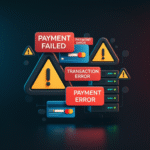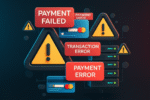In today’s digital age, connectivity is crucial for both personal and business functions. Verizon, one of the leading telecommunications providers in the United States, plays a significant role in maintaining the link between users and the vast digital landscape. However, outages can disrupt this connection, leading to significant challenges.
What Causes Verizon Outages?
Outages can result from various factors, including technical glitches, infrastructure changes, and natural disasters. Understanding the root causes helps users and businesses prepare and mitigate the impact of such disruptions.
- Infrastructure Issues: Aging equipment or unexpected failures can lead to widespread outages.
- Network Overload: High traffic volumes can overwhelm network resources, causing failures.
- Weather Events: Severe weather can damage physical infrastructure, leading to service interruptions.
The Impact of Outages on Connectivity
The impact of Verizon outages reaches far beyond just interrupted phone calls or internet access. Businesses rely heavily on consistent connectivity for operations, customer service, and communications.
- Business Disruption: Companies can face loss of revenue and customer trust if they cannot serve clients effectively during outages.
- Emergency Services: In critical situations, outages can hinder emergency response services, posing risks to safety.
- Remote Work Challenges: With the rise of remote work, access to reliable internet is more important than ever, and outages can disrupt productivity.
How to Stay Prepared During Outages
While outages are often unavoidable, there are steps you can take to minimize their impact:
- Backup Internet Options: Consider having a secondary internet provider or mobile hotspot as a backup.
- Emergency Plans: Businesses should develop contingency plans to handle outages effectively.
- Be Informed: Stay updated on service statuses and disruptions by following Verizon’s social media accounts or website.
Conclusion: Navigating the Digital Landscape
Verizon outages can cause considerable disruptions, affecting a vast array of services and operations. By understanding the causes and preparing for potential issues, users can navigate these challenges more effectively and maintain connectivity in our increasingly digital world.








